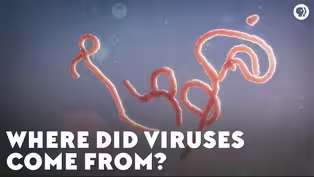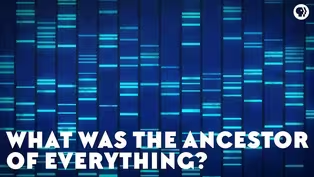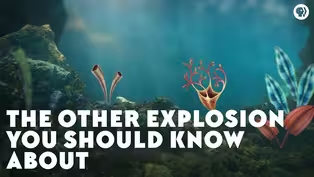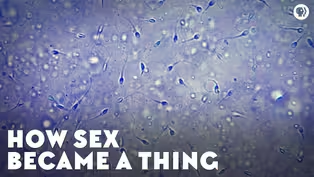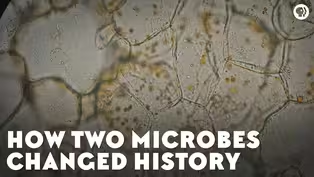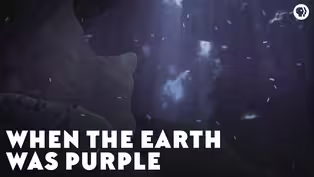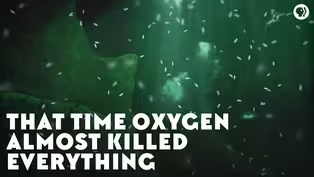
The Search for the Earliest Life
Season 1 Episode 20 | 5m 37sVideo has Closed Captions
Even in a hellish environment, life found a way.
More than 4 billion years ago, the crust of the Earth was still cooling and the oceans were only beginning to form. But in recent years, we’ve started to discover that, even in this hellish environment, life found a way.
Problems playing video? | Closed Captioning Feedback
Problems playing video? | Closed Captioning Feedback

The Search for the Earliest Life
Season 1 Episode 20 | 5m 37sVideo has Closed Captions
More than 4 billion years ago, the crust of the Earth was still cooling and the oceans were only beginning to form. But in recent years, we’ve started to discover that, even in this hellish environment, life found a way.
Problems playing video? | Closed Captioning Feedback
How to Watch Eons
Eons is available to stream on pbs.org and the free PBS App, available on iPhone, Apple TV, Android TV, Android smartphones, Amazon Fire TV, Amazon Fire Tablet, Roku, Samsung Smart TV, and Vizio.
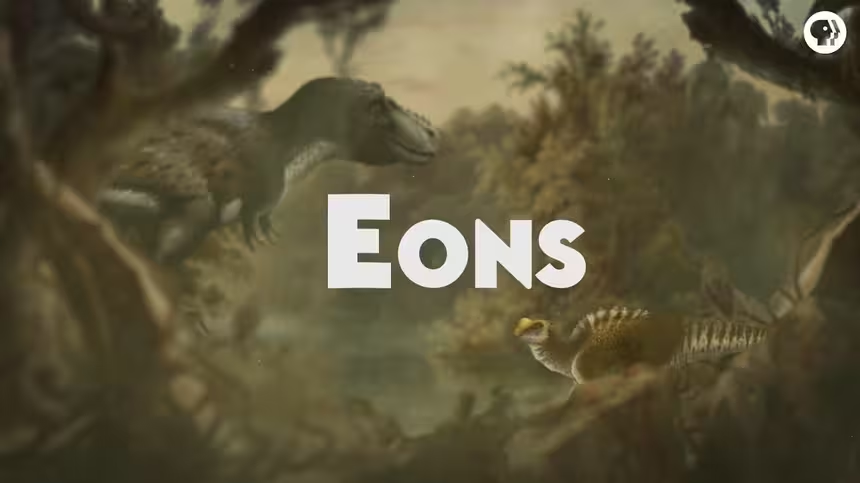
Welcome to Eons!
Join hosts Michelle Barboza-Ramirez, Kallie Moore, and Blake de Pastino as they take you on a journey through the history of life on Earth. From the dawn of life in the Archaean Eon through the Mesozoic Era — the so-called “Age of Dinosaurs” -- right up to the end of the most recent Ice Age.Providing Support for PBS.org
Learn Moreabout PBS online sponsorshipMore from This Collection
Early Life on Earth
Video has Closed Captions
Where did viruses come from and how did they evolve? Are viruses alive? (7m 29s)
What Was the Ancestor of Everything?
Video has Closed Captions
The search for our origins go back to a single common ancestor. (11m 6s)
The Other Explosion You Should Know About
Video has Closed Captions
The Sudden burst of diversity that marked the dawn of truly complex life on our planet. (6m 25s)
Video has Closed Captions
Follow the early history of how (and why) sex became a thing. (5m 39s)
How Two Microbes Changed History
Video has Closed Captions
More than two billion years ago, a tiny living thing started to live inside another thing. (7m 39s)
Video has Closed Captions
But imagine a time when the Earth looked a little … purple. (5m 37s)
That Time Oxygen Almost Killed Everything
Video has Closed Captions
What if we told you that there was a time when oxygen almost wiped out all life on Earth? (4m 45s)
Providing Support for PBS.org
Learn Moreabout PBS online sponsorshipIs it possible that life began on Earth ... before we thought Earth was even ready for it?
More than 4 billion years ago, the crust of the Earth was still cooling.
The oceans were only beginning to form.
And if an asteroid crashed into us, it wasn't a big deal.
That was like ... Tuesday.
But in recent years, we've started to discover that, even in this hellish environment, life uh... found a way.
The search for the earliest signs of life on our planet has always been controversial.
Because, the further back you go in time, the less evidence there is to find.
Rocks get weathered, melted down, and totally transformed by heat and pressure.
And as those old rocks are destroyed, so are the fossils that they might hold.
So right now, the oldest definitive fossils that we know about are in Western Australia.
They're stromatolites, formed by mats of bacteria 3.5 billion years ago.
That's about a half-billion years after the Hadean Eon gave way to the Archaean, when life as we know it was just getting big enough to actually see.
But of course, no one was around to actually see it.
Because there were no eyes or light sensing organs or you know Anyway.
So, picture an ancient Archaean shoreline.
There's barely any oxygen in the air.
And under your feet, at the water's edge, is this ... greenish-black slime.
And lots of it.
That slime might stretch as far as you can see, even forming mounds in the shallow water.
But that slime is actually made up of colonies of microorganisms, like cyanobacteria, which are happily metabolizing carbon dioxide into oxygen.
Over time, these giant mats of microbes trap a bunch of sediment and fossilize, forming the oldest fossils we've ever found.
But scientists think that life is probably even older than that.
Some recent discoveries have pushed back the evidence of life to about 4 billion years ago.
But these finds don't involve fossils at all -- at least, not as we usually think about them.
Instead, what they're finding is microscopic chemical evidence of life, in the form of biogenic carbon.
That's carbon that was once used by, and was part of, living things.
In order to understand what makes biogenic carbon so special, you first have to get to know carbon itself -- the most important element in the history of life.
An atom of carbon always has 6 protons in its nucleus.
It usually has 6 neutrons, too.
But sometimes a seventh or even an eighth neutron sneaks in there.
Atoms with these various numbers of neutrons are known as isotopes.
So the six-neutron isotope of carbon is called carbon-12 -- with six protons and six neutrons.
If it has seven neutrons, then it's carbon-13.
Now, what's important to paleontologists is that all living things have this funny preference for carbon-12 over any other isotope of carbon.
Carbon-12 makes up 99% of all the carbon on Earth, so you'd expect to see it around a lot anyway.
But because it has one less neutron than carbon-13, it's lighter and easier for our cells to use And our cells use them with the help of enzymes.
Almost all living things -- you, me, trees, bacteria, wildebeest -- they all use enzymes to make things like fats and proteins: the stuff that life is made of.
So, let's say the enzymes in some microbe bump into atoms of carbon-12.
Those atoms will be easier for the enzymes to take up and incorporate.
But the Carbon-13 tends to get left behind.
As a result, the carbon in that microbe will have a much lower ratio of carbon-13 to carbon-12 than the carbon that's in something that was never alive.
Specifically, that ratio will be 25% lower.
That minus-25% ratio means that what you're looking at is probably biogenic carbon, so that's what scientists look for, when they're searching the earliest signs of life on Earth.
Now, in order to find super-old biogenic carbon, you need super-old rocks.
And rock outcrops that are older than three and a half billion years are hard to come by.
But a belt of rocks in southwestern Greenland is one of those places, where exposed bedrock has been dated to 3.76 billion years old.
And there, in 2013, a team of Japanese scientists found that the best preserved of these rocks contained biogenic carbon, with that same ratio of carbon-13 to carbon-12 that all living things have.
More recently, in 2017, another team reported finding biogenic carbon in rocks from Labrador, Canada that were an astonishing 3.95 billion years old!
Those findings are still highly debated.
But if they were confirmed, it'd mean that life was around when those Canadian rocks formed, way back when the Hadean Eon had just ended.
But the potentially oldest biogenic carbon EVER found goes back even further.
It was found trapped inside a single crystal of zircon from the Jack Hills of Western Australia.
Zircons are tiny crystals made of silicon, oxygen, and zirconium.
And they're practically indestructible.
While most rocks haven't been able to last 4 billion years, sometimes zircon crystals do.
And in 2015, researchers found a bit of carbon inside this single Australian crystal that was 4.1 billion years old!
And sure enough, the sample had the same ratio of carbon-13 to carbon-12 as biogenic carbon.
So, could this mean that there was life on Earth 4.1 billion years ago, back in the Hadean Eon, when Earth wasn't quite ... ready to come out of the oven?
Well, a single crystal doesn't come anywhere close to proving that.
And the researchers don't claim that it does.
Instead, they say, it's just another clue - - but an important one, about how biogenic carbon can unlock the secrets about the origins of life.
But there's still a question hanging around in the background of all this: What kind of life could have left these traces of carbon?
What could life have possibly looked like 4 billion years ago?
Well, we know that even in the early Archaen, Earth was a pretty hostile place -- what with all the asteroid impacts and lack of oxygen in the atmosphere.
So the biogenic carbon that's been found could be the remains of cyanobacteria, bacteria that used photosynthesis to live anaerobically in an oxygen-poor environment.
Or maybe they were chemoautotrophs -- microbes that metabolized inorganic chemicals for energy, instead of using sunlight.
It's hard to say.
And maybe the Hadean was actually a lot less hostile than we always thought.
We're just not sure.
But it's looking more and more likely that life on Earth goes back all the way to the Hadean eon more than 4 billion years ago.
Which means life may have been around for almost the entire history of the planet.
And we're able to learn that remarkable story without fossils, just by counting the neutrons in carbon.
Now, what do you want to know about the story of life on Earth?
Let us know in the comments.
And don't forget to go to youtube.com/eons and subscribe!
And the fun doesn't end here!
Do yourself a favor and check out some of our sister channels from PBS Digital Studios.


- Science and Nature

A documentary series capturing the resilient work of female land stewards across the United States.












Support for PBS provided by:

